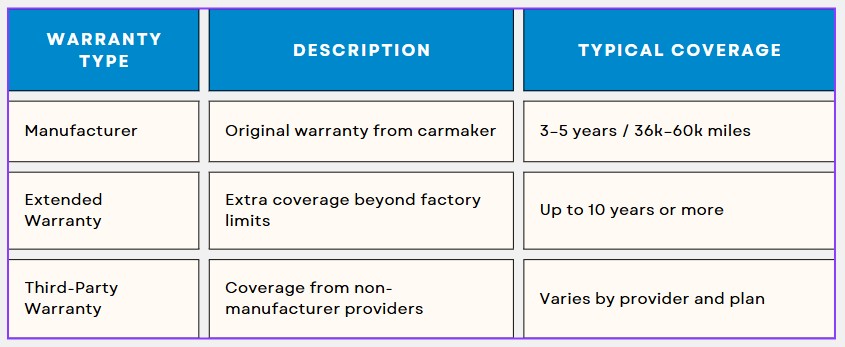If you’re wondering, “How do I check my warranty on my car?” — you’re not alone. Whether you’re buying a used car, unsure about your vehicle’s current coverage, or preparing to file a claim, knowing how to perform a car warranty check by VIN is essential. In this guide, we’ll walk you through step-by-step instructions to check warranty by VIN — covering manufacturer warranties, extended warranties, and third-party coverage.

What Is a VIN and Why It Matters
Your VIN is a 17-character code unique to your vehicle. It acts like a digital fingerprint, storing details about your car’s origin, features, and history—including warranty coverage.
Where to find your VIN:
- On the dashboard, driver’s side near the windshield
- Inside the driver’s door frame
- On your vehicle title or insurance documents
➡️ Learn more: The Role of VIN Checks in Safe Vehicle Purchases
Step-by-Step: How to Check Warranty by VIN
1. Choose the Warranty Type
Know what type of coverage you’re checking:

2. Check on the Manufacturer’s Website
Many automakers have online tools that let you check warranty by VIN.
Some examples:
Just enter your VIN to view:
✅ Warranty start date
✅ Remaining powertrain or bumper-to-bumper coverage
✅ Recall history (if available)
This is the most accurate way to check if your vehicle still has active coverage from the manufacturer.
3. Use a VIN Lookup Tool
If the manufacturer’s site doesn’t show full info or you want a more detailed view, try a free vehicle history report on VinCheck.info.
A full VIN report may include:
- Factory warranty details
- Open recalls
- Title and ownership history
- Odometer records
- Accident reports
➡️ Try it now: Free VIN Check Tool
4. Contact the Dealership or Previous Owner
If you’re still not seeing complete information:
- Call a local dealership for your car’s brand—they can check their database.
- Ask the previous owner or dealer if an extended or third-party warranty was purchased.
- Request a copy of the warranty contract, if available.
How to Check for Extended and Third-Party Warranties
These types of warranties might not appear on manufacturer sites. Here’s how to find out:
Check Your Documents
Look for:
- The warranty contract
- Purchase receipt
- Contact info of the warranty provider
Contact the Provider
Call the third-party company. Provide your VIN and ask:
- Is the policy still active?
- What components are covered?
- When does coverage expire?
Ask the Dealership
If you bought your vehicle from a dealer, they might have sold you or the previous owner an extended plan. They can check their records and provide contact details.
Filing a Warranty Claim? Here’s What to Do
If you discover your warranty is still active, follow these steps when something breaks down:
- ✅ Confirm coverage: Make sure the issue is included under the plan.
- 🧰 Use an approved repair shop: Especially important for factory or certified warranties.
- 📄 Prepare documents: Bring your VIN, service records, and warranty contract.
- 📞 Get pre-approval: For third-party warranties, call the provider before any repairs begin.
⚠️ Most warranties don’t cover wear-and-tear items, routine maintenance, or cosmetic damage.
Common Questions About Warranty Checks
How to check my warranty on my car if I lost the documents?
You can use your VIN and run a free warranty check on trusted sites or call the dealership.
Is a car warranty transferable?
Factory warranties usually transfer automatically to new owners. Some extended warranties are transferable—check the contract for terms.
Can I do a car warranty check by VIN for free?
Yes! Tools like VinCheck.info offer basic warranty info at no cost.
Final Thoughts
Doing a car warranty check by VIN is one of the fastest ways to understand your vehicle’s coverage. Whether you’re trying to avoid repair bills or evaluating a used car, knowing the warranty status helps you make smarter decisions.
Start by locating your VIN, visit your manufacturer’s support site, or run a free warranty lookup on VinCheck.info. It only takes a few minutes—and could save you a lot of money.